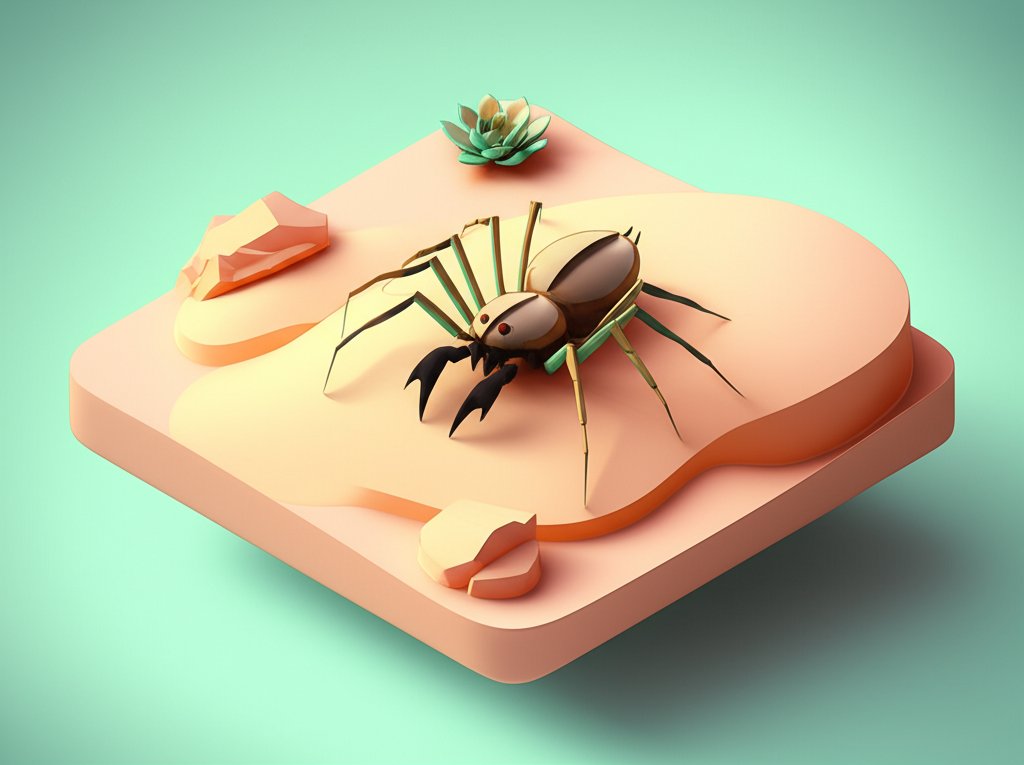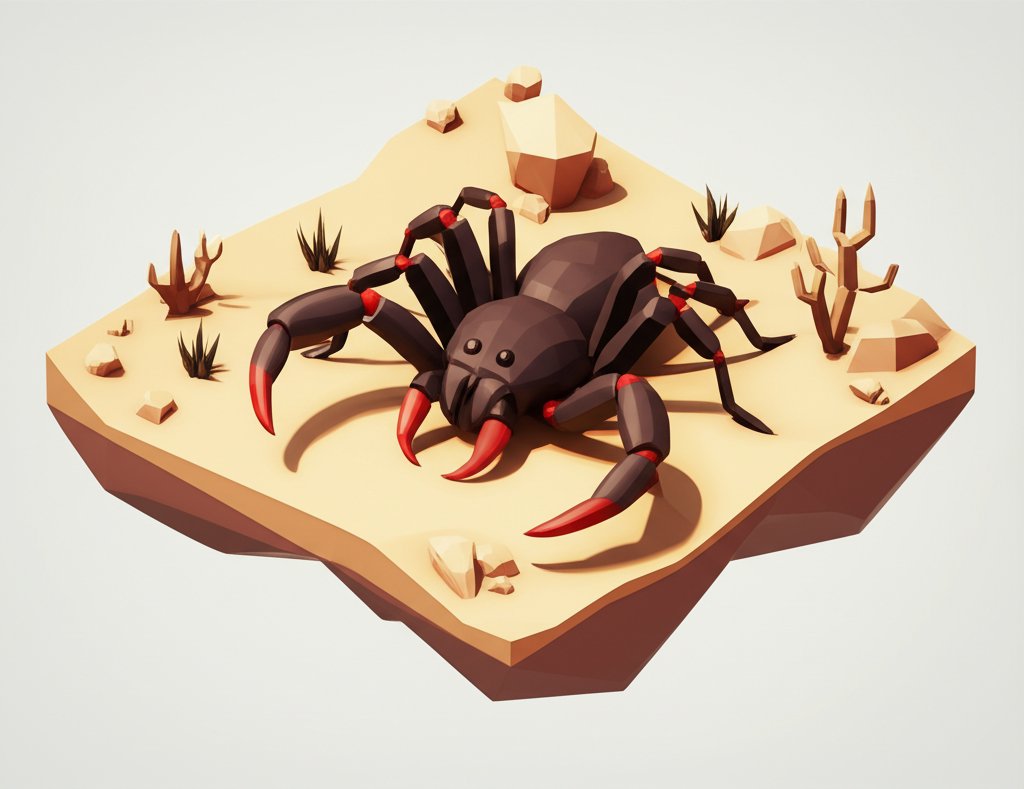Camel spiders, also known as wind scorpions and sun spiders, are creatures shrouded in myth and fear. Their unusual appearance and aggressive hunting style have led to numerous misconceptions, particularly regarding their potential danger to humans. This article aims to separate fact from fiction, providing accurate information about camel spiders, their bites, and their behavior.
Decoding the Danger: Are Camel Spiders Poisonous?

Camel spiders are not poisonous. They do not possess venom glands and, therefore, cannot inject toxins. The myth of their venomous nature likely originates from a combination of their intimidating appearance, their quick movements, the “wind scorpion” nickname (which falsely links them to venomous scorpions), and the way they liquefy their prey with digestive fluids – a process sometimes mistaken for venom injection. Beyond the misconception of toxicity, other outlandish myths persist, such as camel spiders disemboweling camels or laying eggs under human skin – all entirely false. The name “camel spider” likely stems from their common presence in desert regions where camels are found. Discover the beauty of the unique alligator juniper, an extraordinary evergreen shrub often found in their habitat.
Dispelling the Venom Myth
Several factors likely contribute to the persistent myth of the venomous camel spider:
- Intimidating Appearance: Their large size (up to 6 inches in leg span), hairy bodies, and prominent chelicerae (jaws) contribute to their fearsome image.
- The “Wind Scorpion” Misnomer: This nickname creates a false association with true scorpions, many of which are venomous. Camel spiders are solifugids, a distinct order of arachnids.
- Exaggerated Stories: Anecdotes of painful bites can be misinterpreted as evidence of venom, especially when combined with their already frightening reputation.
- Digestive Process: Camel spiders use digestive fluids to liquefy their prey before consuming it. This process may have been mistaken for the injection of venom.
Bites: Painful, Not Poisonous
While not venomous, a camel spider bite can be painful. Their powerful chelicerae are designed for crushing and tearing prey, and a bite can break human skin. However, the bite itself is not inherently dangerous. The main concern is the potential for infection, just like any other wound. Thorough cleaning with soap and water is recommended, and seeking medical advice is prudent if infection signs appear.
Understanding Camel Spider Bite Symptoms
While a camel spider bite is not venomous, its mechanical impact can cause several noticeable symptoms due to their strong, plier-like jaws:
- Intense Pain: The most immediate and common symptom is sharp, intense pain at the bite site. This is purely from the mechanical force of their powerful chelicerae tearing skin tissue.
- Inflammation and Tenderness: The area around the bite will likely become inflamed, red, and tender to the touch, which is a natural response of the body to localized trauma.
- Bleeding: Depending on the size of the camel spider and the extent of the bite, minor to profuse bleeding can occur, similar to any other deep puncture or laceration.
- Open Wound and Infection Risk: The bite creates an open wound, making it susceptible to bacterial infection. This risk is heightened because their jaws can carry residues from previous meals. Untreated infections can, in rare cases, lead to more serious complications like sepsis.
- Allergic Reaction: Though uncommon, some individuals may experience a more severe localized or systemic allergic reaction, presenting with intensified itching, swelling, or redness beyond the immediate bite area.
First Aid and Treatment for a Camel Spider Bite
Since a camel spider bite does not involve the injection of any camel spider venom, immediate medical intervention is typically not required unless there are signs of infection, an allergic reaction, or if the bitten individual is particularly vulnerable (e.g., a child, elderly, pregnant, or has underlying health conditions like diabetes).
Here are the recommended first aid steps:
- Clean the Wound Thoroughly: The most crucial step is to immediately wash the bite area with mild soap and water. An antiseptic solution can also be used. This helps to remove any bacteria, dirt, or organic matter that might have entered the wound, minimizing the risk of infection.
- Apply Pressure (if bleeding): If bleeding is profuse, apply gentle, direct pressure to the wound with a clean cloth or sterile gauze until it subsides.
- Reduce Swelling: Applying a cold compress or ice pack to the affected area can help reduce swelling and pain.
- Monitor for Infection: Keep a close eye on the bite for signs of infection such as increasing redness, warmth, swelling, pus, or fever.
- Seek Medical Advice: Consult a healthcare professional if signs of infection develop, if symptoms worsen, if you suspect an allergic reaction, or if the bite is particularly deep or large.
Deconstructing Aggression: How Dangerous Are They?
Camel spiders are aggressive hunters, primarily targeting insects, other small arthropods, and sometimes small vertebrates like lizards and rodents. Their aggression, however, is rarely directed towards humans. While they might chase shadows (likely to regulate their body temperature or seeking shelter from the sun), they do not actively hunt people. Bites typically occur when the camel spider is provoked or feels threatened.
| Myth | Fact |
|---|---|
| Camel spiders are venomous. | Camel spiders are not venomous. Their bites are painful due to their strong jaws, but they don’t inject venom. |
| Camel spiders are deadly. | Camel spider bites are not deadly to humans. |
| Camel spiders attack humans. | Camel spiders primarily bite defensively when threatened. They are more likely seeking shade than actively trying to attack. |
Understanding Their Behavior
- Nocturnal Nature: Camel spiders are primarily nocturnal, further reducing the likelihood of encounters with humans.
- Defensive, Not Aggressive: While their appearance and speed (up to 10 mph) might seem intimidating, their behavior is largely defensive. They will bite if provoked or cornered, but they do not actively seek out human interaction.
- Ecological Role: Camel spiders play an important role in their ecosystem. As predators, they help control insect populations, contributing to a balanced environment.
Fluffy, Fast, and Fearsome? Unraveling the Truth
The “fluffy” appearance of some camel spider species, attributed to their hair-like setae, does not change the fundamental facts about their venom (or lack thereof). All camel spiders, regardless of their hairiness, are non-venomous. The myth of their danger persists, likely fueled by the same factors discussed previously: their large jaws, their speed, and the misinterpretations of their behavior.
Key Things to Keep in Mind:
- No Poison, No Venom: Camel spiders don’t have venom glands and can’t inject venom.
- Strong Jaws, Not Fangs: Their jaws are powerful and deliver painful bites, but aren’t fangs designed for venom injection.
- Painful, Not Deadly: A bite might hurt, similar to a bee sting, but won’t be life-threatening to humans.
- Not True Spiders: They are solifugids, a different arachnid order.
- Ecosystem Helpers: They play a vital role in controlling insect populations.
Addressing Misinformation
Some sensationalized stories portray camel spiders as aggressive, fast, and large enough to be a significant threat. While they can be large for arachnids (up to 6 inches), they are not “half the size of a human” as some myths claim. Their speed is closer to 10 mph, fast for a small creature but not the mythical 30 mph often cited. They are not inherently aggressive towards humans, focusing their predatory behavior on smaller creatures.
Ongoing Research and Future Directions

While the current scientific consensus indicates that camel spiders lack venom, research is ongoing. Studying even seemingly well-known organisms can yield new discoveries. Further research might shed light on more nuanced defensive mechanisms or other aspects of their biology and behavior. This continuous exploration underscores the dynamic nature of scientific knowledge and the importance of relying on credible sources for information.
It is important to understand that scientific understanding evolves. While current evidence strongly suggests camel spiders are not venomous, ongoing research may offer more insights. This acknowledgment of the evolving nature of scientific knowledge enhances credibility and encourages critical thinking. By engaging with the scientific process and focusing on accurate information, we can replace fear with appreciation for these fascinating desert dwellers.











1 thought on “Camel Spider Bites: Poisonous or Painful? Separating Fact from Fiction”
Comments are closed.